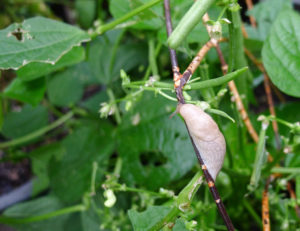 So many insect pests, so little time to crush, drown and destroy them.
So many insect pests, so little time to crush, drown and destroy them.
July seems to be when insect pests start to show up and cause damage to garden plants. Some damage is simply cosmetic, like holes in leaves, but other insect damage can cause plants to wither and die.
To keep your landscape and garden healthy, spend a little extra time looking for these insects and then take action to control them:
Aphids are small pear-shaped insects that suck sap from plant leaves making them curl. If you see aphids (or groups of ants attracted to aphid infestations) dislodge with a strong stream of water from the hose every few days until they’re gone. Insecticidal soap also works to rid plants of aphids.
Cabbage worms start as little white butterflies that lay eggs. The eggs grow into cabbage caterpillars that attack cabbage leaves. If the eggs are hatching, look for the fat caterpillars under cabbage leaves. Pick by hand and drown in a bucket of soapy water. Bt (Bacillus thuringiensis) is a soil bacterium that helps control caterpillars. Apply Bt by shaking the dust over plants.
Flea beetles are tiny insects that eat small holes in leaves. In early spring, row cover cloth can protect young plants, but later in the season white sticky traps do a better job.
Slugs typically show up when conditions are too moist. Check for slugs at night when they’re feeding or look for them early in the morning. Keep soils on the dry side to prevent slugs. Traps of yeast water (or beer) will attract and drown them. Diatomaceous earth sprinkled around plants will also discourage slugs.
Spider mites leave a fine webbing on plants and some speckling on the undersides of leaves. A strong blast of water from the hose can knock them down. Insecticidal soap can also be effective.
Tomato hornworms are large green caterpillars that feed on tomato plants and can strip a plant’s leaves in a day. Take your time to spot these pests because they’re the same color as leaves and stems. Handpick or knock them into a bucket of soapy water or a paper bag for disposal.
Keep checking your vegetable garden, flowering plants, shrubs and trees for signs of insect damage throughout the summer. The sooner you spot a problem, the sooner you can take action to maintain a healthy landscape.

